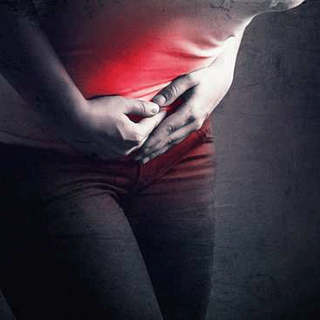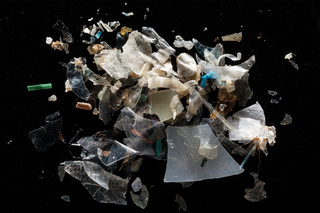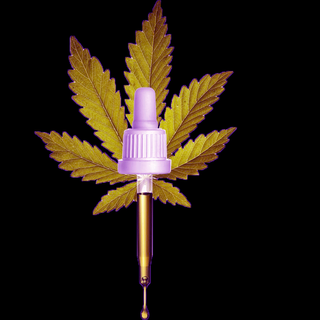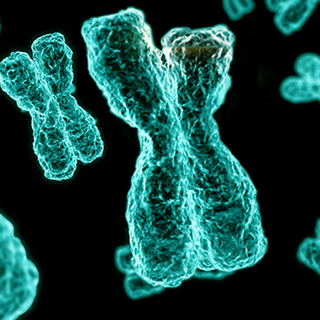
We’re Eating Thousands of Microplastics in Our Food Each Year
Scientists are only beginning to study how these plastic particles affect the human body.

We’re all consuming tens of thousands of microplastics in the food we eat and air we breathe each year — and that’s a low estimate, says a recent study published in the journal Environmental Science and Technology.
A World Wildlife Fund estimate based off of the study’s data puts this into common context: We’re eating one credit card of plastic — 5 grams — each day.
And scientists have no idea what this means for our bodies, which, it’s safe to say, are not evolutionarily suited to digesting a material never intended for human consumption.
Microplastics refer to any fragment of plastic 5 mm or smaller. Some microplastics are naked to the human eye, and are only visible under a microscope. They enter the ecosystem, and the human body, as pollution, tainting our air and water supplies. They can also accumulate in greater and greater amounts up the food chain, until they end up in large amounts in something humans eat.
The study is the latest entry into what is a hot line of research, following a small-scale study published last year that found microplastics in the stools of all eight participants, each of whom hailed from a different country across Europe and Asia.
“Of particular concern is what this means to us, and especially patients with gastrointestinal diseases,” Philipp Schwabl, the 2018 study’s leader and a gastroenterologist with the Medical University of Vienna, told CNN at the time. “While the highest plastic concentrations in animal studies have been found in the gut, the smallest microplastic particles are capable of entering the blood stream, lymphatic system and may even reach the liver.”
This newest study helps fill in the scope of our accidental dietary supplementation. Based on U.S. government recommendations around human consumption of each food item studied, researchers estimated an individual consumes anywhere from 39,000 to 52,000 microplastic bits each year, National Geographic reports. When inhalation is considered, the amount rises to 74,000 particles each year. And anyone who primarily drinks their water from plastic bottles can add 90,000 plastic particles to that, for a whopping potential 1.64 lakh microplastic particles in their diet a year.
Yet, it’s by no means a comprehensive portrait of inadvertent plastic consumption; the total amount of microplastic consumed is likely far more, researchers said. The conclusion is based on microplastic particle data from existing studies, which have, to date, been limited to beer, salt, seafood, sugar, alcohol, and honey. So, we could be consuming even more microplastics from other foods that make up our diet, but which have yet to be studied.
Related on The Swaddle:
There Are Human Drugs in Your Drinking Water Supply
“A lot of the items we considered are the ones you’re eating raw. We haven’t gotten to the layers and layers of plastic packaging,” Kieran Cox, an author of the latest study, told National Geographic. “I think it’s probably the case that more plastic is being added than we realize.”
The microfibers of manmade textiles like nylon and polyester were the most common microplastic particles found to contaminate food. The second-most common kind of microplastic contamination came from the kind of plastic that goes into making bags and straws.
Their effects are unknown; microplastics come from many different sources beyond the two above, and composition varies widely. Some microplastics comprise chemicals toxic to humans, in large enough quantities. Others may not be inherently dangerous, but may absorb toxins or pathogens from their environment and transmit them to humans. And while no one is telling you to avoid beer, salt, seafood, sugar, alcohol, and honey yet (well, avoid sugar, but for other reasons), initial research into the effects of microplastic contamination suggests build-up can affect the human gut microbiome and immune system.
Bottom line? Maybe Maharashtra’s plastic bag ban isn’t so annoying after all.
Liesl Goecker is The Swaddle's managing editor.
Related


Untrending: CBD Oil Is Not a Cure‑All
